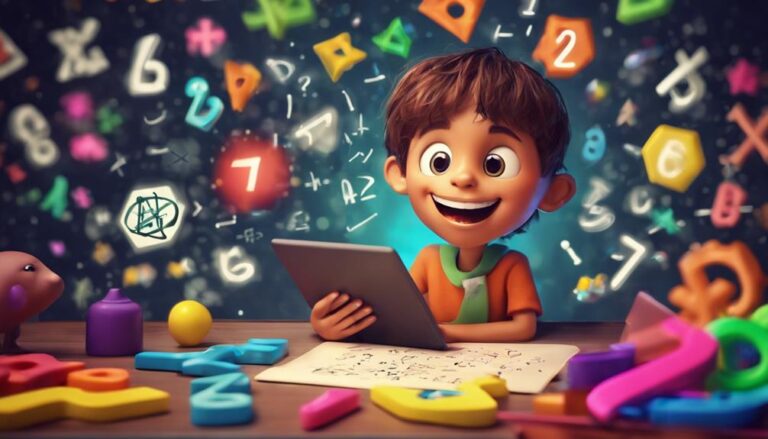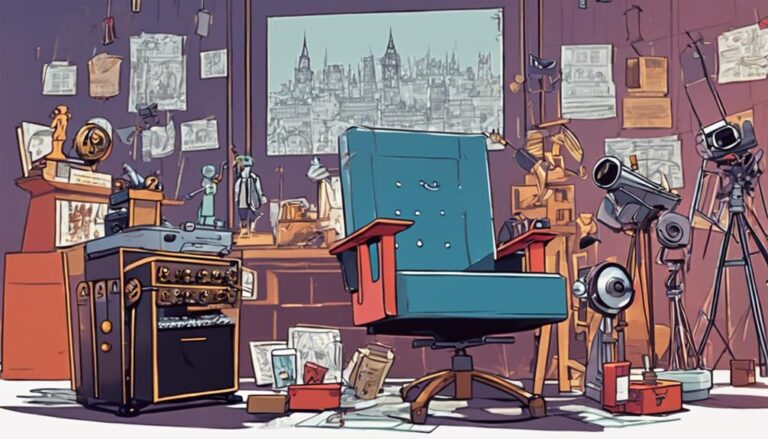Designing Engaging Animation Video Game Characters
As you set out to craft animation video game characters that truly resonate with players, you'll find that it's not just about creating visually appealing designs. You're tasked with breathing life into digital beings that can evoke emotions, build connections, and drive engagement. But what sets apart the iconic characters from the forgettable ones? It all starts with a deep understanding of what makes a character relatable, believable, and memorable. You're about to discover the essential elements that can elevate your character designs from bland to grand – and it begins with a pivotal question: what's the secret to making players truly care about your characters?
Key Takeaways
- Combine cultural inspirations with visual archetypes to create aesthetically pleasing and emotionally relatable characters.
- Craft a rich backstory to infuse characters with a sense of history, motivation, and relatability.
- Make characters complex individuals with a rich inner life, full of contradictions and paradoxes.
- Strike a delicate balance between realism and fantasy to make characters more believable and engaging.
Crafting Memorable Character Designs
When conjuring up an animation video game character, you need to craft a design that's both visually striking and emotionally resonant, a fusion that will make players instinctively root for them from the get-go.
To achieve this, draw inspiration from diverse cultural backgrounds. Tap into the rich tapestry of mythologies, folklore, and fairy tales from around the world. Incorporate symbolic motifs, vibrant colors, and distinct patterns that evoke a sense of heritage and authenticity. For instance, you could infuse your character with the bold, graphic lines of ancient African art or the whimsical, dreamlike quality of Japanese anime.
Visual archetypes also play a vital role in crafting memorable designs. Think about the iconic silhouettes, facial features, and body language that instantly convey personality traits, skills, or abilities.
A character with broad shoulders and a chiseled jawline might exude confidence and strength, while one with oversized eyes and a petite frame might radiate innocence and vulnerability. By combining cultural inspirations with visual archetypes, you'll create a character that's not only aesthetically pleasing but also emotionally relatable and deeply memorable.
Building Depth Through Backstory
As you breathe life into your animation video game character, crafting a rich backstory becomes essential to infusing them with a sense of history, motivation, and relatability that resonates deeply with players.
This backstory is the foundation upon which your character's personality, actions, and decisions are built. It's where you weave together the threads of their cultural influences, moral complexities, and personal experiences to create a multidimensional being.
Consider the events that shaped their worldview, the people who molded their values, and the challenges that tested their resolve. Did they grow up in a war-torn city, or were they raised in a peaceful village?
Were they mentored by a wise elder or bullied by their peers? The answers to these questions won't only inform their behaviors but also evoke empathy and understanding from your players.
Designing Relatable Personality Traits
With your character's backstory firmly established, you can now craft a relatable personality that resonates with players by infusing them with authentic traits, desires, and flaws that drive their actions and decisions.
Think of your character as a complex individual with a rich inner life, full of contradictions and paradoxes. Give them a dash of moral ambiguity, making them neither purely good nor evil, but rather somewhere in between.
This will make their choices and motivations more believable and intriguing.
Make your character emotionally vulnerable, with fears, hopes, and desires that players can identify with. Perhaps they're driven by a need for validation, or haunted by a past trauma.
This emotional depth will help players form a strong emotional connection with your character, investing them in the story and its outcome.
Balancing Realism and Fantasy
You're now tasked with striking a delicate balance between realism and fantasy, as your character's relatable personality traits must coexist with the extraordinary elements of your game's world.
This harmonious blend will make your character more believable and engaging to players. To achieve this balance, consider stylized proportions that exaggerate certain features without straying too far from reality.
For example, a character's eyes might be slightly larger than normal to convey their emotions more effectively.
Hyper-real textures can also help bridge the gap between realism and fantasy. By adding intricate details to your character's skin, clothing, or accessories, you can create a sense of authenticity that grounds them in the game's world.
At the same time, these textures can be tweaked to accommodate fantastical elements, such as glowing runes or iridescent fabrics.
As you fine-tune this balance, remember that it's all about creating a character that feels both familiar and extraordinary.
Bringing Characters to Life
Bringing Characters to Life
By infusing your characters with distinct mannerisms, quirks, and personality-driven animations, you can transform them from static models into living, breathing entities that captivate players and draw them into the game's world.
To achieve this, focus on creating Emotional Resonance by making your characters relatable and authentic. This can be done by adding subtle gestures, like a nervous twitch or a confident stride, that reveal their personality and emotional state.
Character Nuance is key to creating believable characters. Consider the following:
| Character Trait | Animation Cue | Emotional Resonance |
|---|---|---|
| Shyness | Avoiding eye contact | Players empathize with the character's vulnerability |
| Confidence | Chest-out stride | Players feel inspired by the character's courage |
| Sarcasm | Eye-rolling | Players laugh at the character's wit |
Frequently Asked Questions
How Do I Ensure Consistency Across Different Character Designs?
When creating a visual identity, you'll want to establish a cohesive look by developing style guides and design briefs that outline specific elements, ensuring consistency across all designs, whether it's characters, logos, or branding.
Can I Use Real-World Cultural References in My Designs?
You're wondering if you can infuse your designs with real-world cultural references. Absolutely! Cultural nodding and historical inspirations can enrich your creations, adding depth and authenticity.
How Do I Make Characters Appealing to a Broad Audience?
To craft universally appealing characters, you'll create an emotional connection by balancing unique traits with relatable flaws, making them authentic and endearing to a broad audience, who'll root for them and invest in their journey.
What Is the Ideal Character-To-Player Ratio in a Game?
When crafting an immersive experience, you'll want to strike a balance between the number of characters and the depth of player attachment. Aim for a ratio that allows for rich character complexity, without overwhelming the player's emotional bandwidth.
Should I Prioritize Character Aesthetics or Functionality?
When crafting a character, you're torn between aesthetics and functionality – do you prioritize visual appeal or practicality? Consider your artistic vision and create a visual hierarchy, balancing style with substance to bring your character to life.
Conclusion
As you bring your characters to life, remember that the key to their success lies in the harmony of cultural inspiration, rich backstory, relatable traits, and balanced realism and fantasy.
With these elements in place, your characters will pulse with authenticity, their motivations and emotions resonating deeply with players.
Now, set free your imagination and craft characters that will captivate, inspire, and leave an indelible mark on the gaming world.






